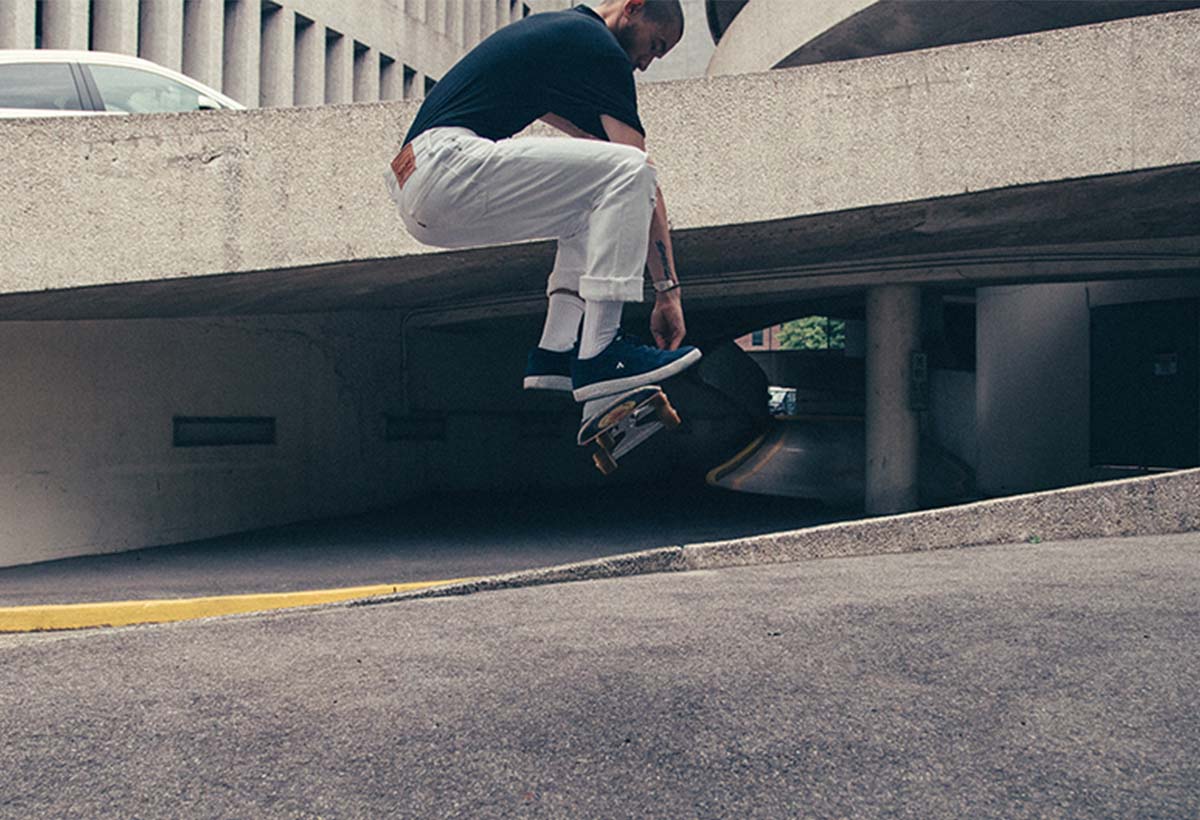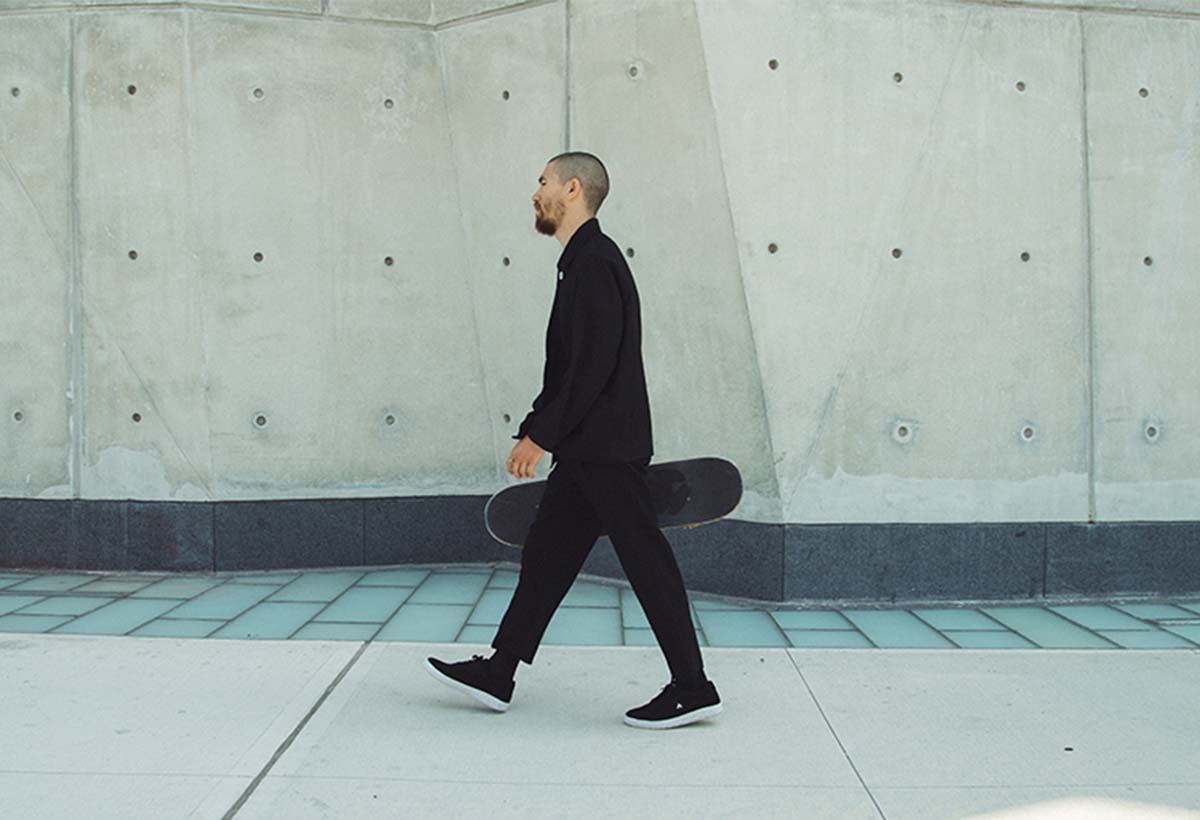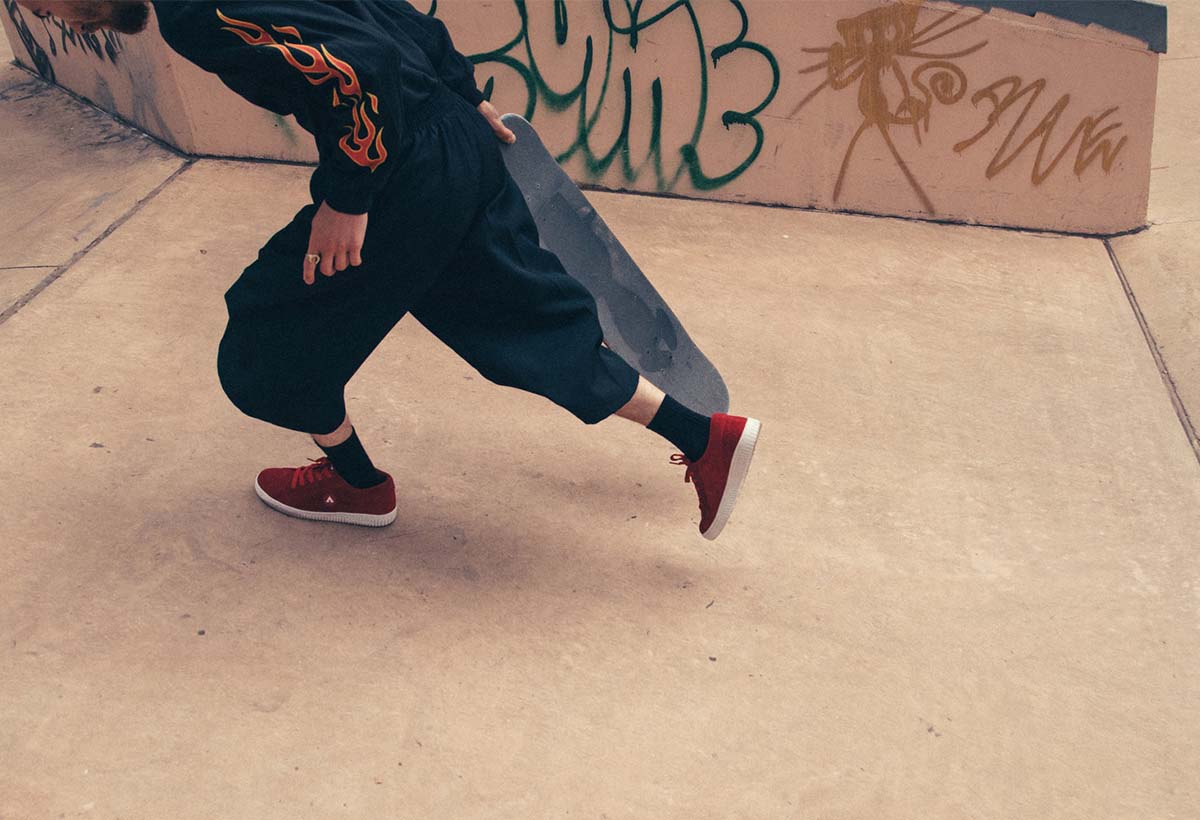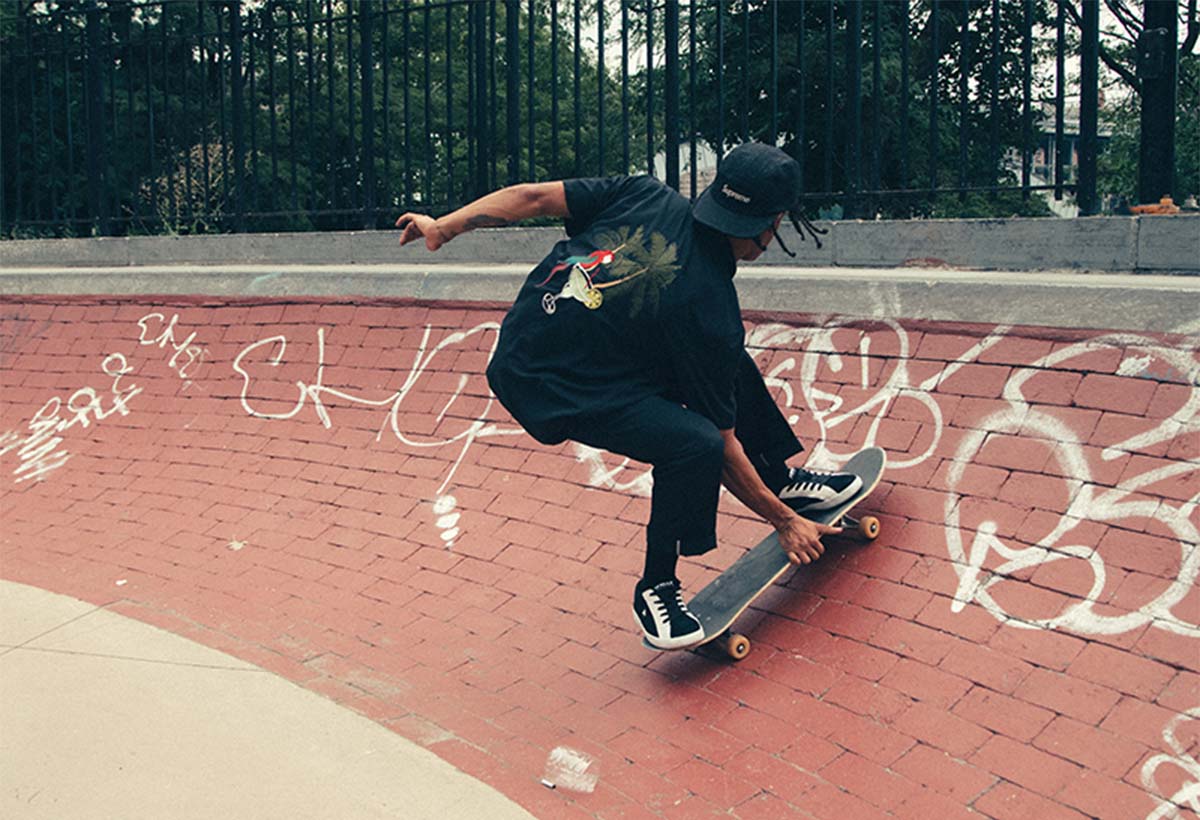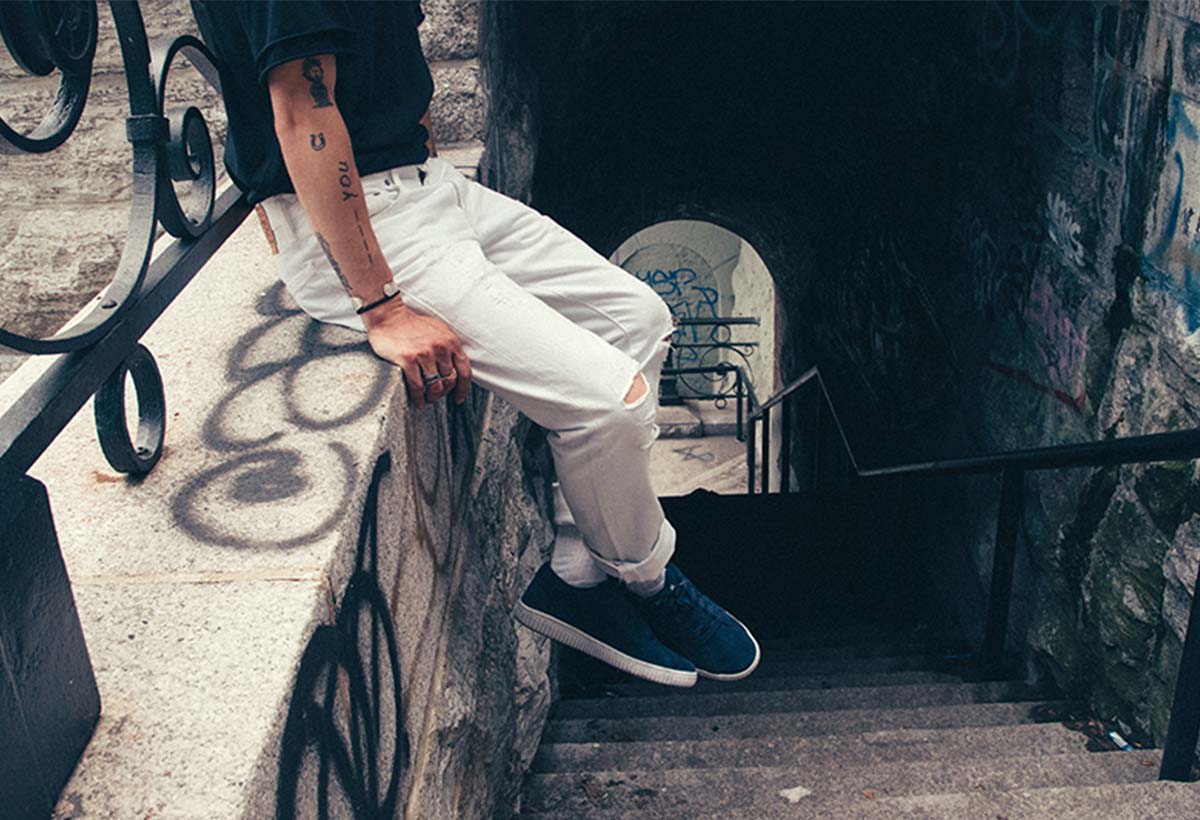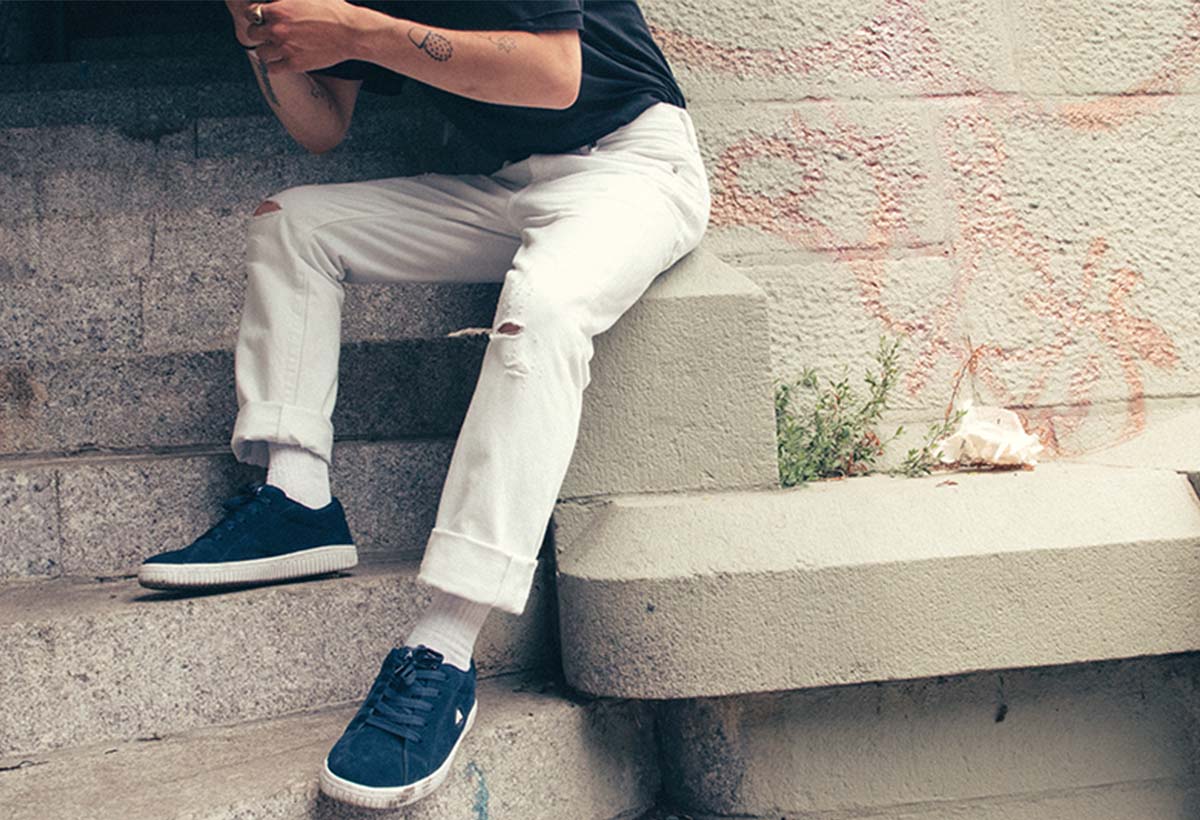Wondering what happened to Airwalk? Airwalk shoes history is a great illustration of what started off as an earnest staple for skaters and grew into something else. Unfortunately, part of the Airwalk story also involves the brand slipping into abject irrelevance. Skateboarding shoes are a category much like other sneaker sectors.
Specific to their sport and athletes, this section of the sneaker community has its own particulars. Nowadays, Airwalk classics are a must have for a large number of fans.
Materials, impact protection, ride, durability, it all comes together as part of a larger design philosophy. But, it’s worth noting that skateboarding also presents something a bit different in the community.
Though you may not have heard very much about them – or know the name at all – Airwalk shoes really have a respectable history. The company’s status as a bargain shoe, otherwise known “get that outta here,” belies a strong background in the skating game.
Perhaps more fascinating is the part of this story that involves a bright and innovative skateboarding brand deciding to look in another direction for its revenue. At the moment, the Airwalk sneakers skateboard revival is the company’s focus.
With that being said, it is still definitely worth looking at its past – both recent and otherwise – to understand its present and future. Explore with us this one of a kind Airwalk shoes wiki of sorts.
Airwalk Kick-Flipping Things Off
Skateboarding, as you might already know, starts off with the sport of rebellion and anxiety. Particularly in the United States, the sport is an expression of youth culture that clashes with any larger authority.
Anything that demands more of you than what is natural is evil, or so goes the line of reasoning. This sense is particularly tangible in the 1980s. As the larger public was reeling from tough times economically, it seemed like there was more trust in the government overall.
This fuels an anti-establishment rhetoric that quickly becomes popular, ironically, simply because it is opposite of the popular sentiment.
Around the early 80s, brands such as Vans take a serious hold of the skateboarding market, not intending to let go. But, despite having relatively no history in the field and no team of sponsorships to speak of, Airwalk enters the ring.
In 1986, George Yohn and Bill Mann decide to break into the industry with a simple goal: create shoes that are more functionally sound and durable for skateboarders.
Considering similar goals of brands in different sectors, this seems like a lofty goal. But, a few pieces of circumstance come together that help Airwalk get a running start.
Further Reading: Walk On Air With Airwalk Sneakers
Bringing Experience
Though there’s no real background for the brand to start in the market, its founders are not newbies. Yohn comes into Airwalk’s start with a strong background in the footwear game.
The Pennsylvania native racked up $12 million in sales as the founder of his own sneaker brand, Blair Co. Increases in shoe manufacturing cost would render this effort unmanageable.
As for Mann, the former Art student comes with years of experience as a buyer in the athletic sneakers sector. Though they take on the tough task of starting a sneaker company, the founders don’t come without some firepower of their own.
Another piece of good fortune for the early days of Airwalk history is the growth of sports shoes. In the late 1970s, athletic gear sees a remarkable spike upwards in sales and demand.
Everyone was on a nation-wide fitness kick in the United States. In fact, Mann’s time as a buyer is mostly spent trying to put together the perfect shoe for active women and “jazzercise” classes.
This was clearly a sector that is suitable for monetization. Sneakers from all sorts of brands in the 80s boast comfort and tech that has no rivals. So, why not have a piece of that pie?
Taking things (too) Slow
The company’s early efforts fail thanks to their over-considerate approach. In 1983, Mann was the who decided to go all in on the fitness craze among American women.
He asks one of the brand’s designers to attend some jazzercise classes and observe what it is these activities involve. Frankly, this is a tremendous idea on the surface. Sneaker design, performance or otherwise, is mostly about function.
In the specific realm of exercise shoes, that focus on utility only intensifies. The company’s designer, of course, learns a ton about the needs of these women. As such, Airwalk now has a blueprint to work from.
The shoe the brand puts together would include features such as more impact protection and a heel that was lower to the ground. Unfortunately, they are much too late to pounce.
The research element of this venture, including attending a large number of classes and interviews, takes too long. In the time that Airwalk does their background research, bigger brands swoop in on an aerobics market that sees a serious boom.
All of a sudden, the brand that was taking a smart and considerate approach was now starting at a disadvantage. But, though the founders go back to the drawing board, there was some glimmer of hope.
Airwalk: A Pre-Teen Proposition

Airwalk collabs with Jeff Staple to bring back some classics
As the market grew, there is natural segmentation. Basketball, football, running, and soccer all had their own thing. Skateboarding would take on its own section as well, addressing the unique needs of its athletes.
It is Mann’s wife who first suggests he take on this particular sector of footwear. To say the least, the former Art student is skeptical.
His years of experience in the industry lead him to believe skateboarding shoes are a nervous experiment at best. Then, he arrives at an interesting conclusion.
Mann’s son, 11-years-old at this point, talks to his father one day about his skating shoes. Specifically, he talks about how boring they are.
The lack of variety and pop at the local sneaker stores made it impossible to wear anything other than a plain pair of leather Reeboks. Hearing his son’s complaint made Mann think that his kid couldn’t be the only one who feels like this.
Doing some more research, which came naturally to the industry pro, an opportunity comes to light.
Kids Skate the Darnedest Things
Mann does his initial research by watching his son and friends at the local skate park. What he finds is both unique and fascinating at the time. Most shoe design considerations include a beefy outsole that would be durable.
The reasons for this are obvious, considering that this is technically the most used section of a shoe. Yet, skateboarders are different.
Mann notices that the shoes these kids wear are being banged up from all the ends. The uppers are worn to near tears, the midsoles are compressed, heels are used up.
In short, skaters were wearing the heck out of their shoes. Leather uppers and a standard gum sole weren’t going to cut it functionally.
Even more so, it didn’t help that these established sneakers typically came with little to no imagination in the style department. Frankly, this is a point in the industry when skaters simply need more. It was time to create Airwalk history.
Minding – and Filling – the Gap
Airwalk was well positioned to address these needs thanks to another issue in the skateboarding community. In the late 1980s, vert skating was exploding onto the scene.
This specific section of the sport was popularized by its high-flying tricks and often monster-sized ramps. But, it also required something more than a plain canvas sneaker that focuses on lightweight design and ride.
The shoes that some of skateboarding’s best vert skaters wear at this time largely fail to stack up. The consistent impact of 40-ft drops was simply too much for some more popular brands.
In step Yohn and Mann. Airwalk builds on this particular need and puts together a relative beast of a shoe. The Disaster, one of their first efforts, looks more like a basketball sneaker.
The high-profile cut and bulky build are not what you expect from a skateboarding shoe. Initially, the shoe seems cumbersome. Though it’s functionally new for the sport, the boisterous colors and high-top look are par for the course in this era, helping Airwalk sell.
This also establishes the brand as a legitimate provider of quality skating shoes. That reputation goes a long way in helping Airwalk put together a strong roster of endorsements, including Jason Lee and Tony Hawk.
Boom to Bust
What soon follows is a huge level of success in Airwalk history. The company’s goals initially involve limiting the production and sale of their shoes to California. Letting them foster a reputation in the surf and skate shops of Cali could lead to a nice type of popularity.
At least, that was the plan. But, the brand sees such wild success within the skateboarding community that prompts a wider realization. Mann sees that the kids in California are not much different from clients across the nation and the world.
In short, everyone is looking for the free-wheeling, rebellious Cali-style. Opening up their offerings, Airwalk eventually sells millions of pairs globally.
This boom represents the highpoint of the brand’s history. A surging popularity of both the label and the sport make Airwalk shoes 80s classics. But, as with most sneaker names that see such success, there is a period of regression.
Airwalk Mainstream Struggles
Thanks to a slightly random observation, Airwalk’s fortunes seemed to have turned rapidly. Unfortunately, that success eventually fades in the 90s largely thanks to a shift in skateboarding culture. In the United States, the entire basis for the popularity of skateboarding was its early image of being anti-establishment.
Moreover, its status made it seem a bit tasteful to larger sections of society. Consequently, skate parks are a rare sight at first. In the 60s, 70s, and 80s, these special parks are seen as meeting spaces for delinquents.
But, in the 90s, this changes, along with Airwalk history. Part of the issue with the popularity of this sport is that it is self-defeating. Once major brands get a hold of the sport, including Airwalk, we see it move to a more mainstream audience.
Consequently, skate parks start to pop up all across the USA in the early to late 90s. Nearly every suburban neighborhood in Northern California is no more than 20 mins away from the nearest skate park.
It makes the sport bigger and more accessible, resulting in some impressive sales figures for plenty of companies.
Cultural Shifts
It also results in a dramatic drop in the sport’s cool-factor. More importantly, the burst in Skateboarding’s popularity puts it on the national stage.
All of a sudden, news reports during primetime television hours are focusing on skateboarding. From alternative fitness to downright criminal behavior, the takes on it varied.
But, the sport largely reinforced the stereotype placed upon it by the establishment in the USA at this time. Consequently, there is a widespread public backlash, citing the new skateparks as the main cause of an increase in loitering and teen crime.
Consequently, parents are now less willing to buy skateboards for their children. No boards, no skating, no need for skateboarding shoes. Now, of course, this downturn doesn’t last, but Airwalk’s dramatic dip in sales was much too heavy.
The brand lets go of their skateboarding line and opt for a more popular strategy. Similar to many major brands in the industry, Airwalk decided to market an entire lifestyle.
In hindsight, the decision is a great one because the brand already has access to this Cali-style look that was hotly pursued.

Heydays
After experimenting with snow boots and other action sports equipment, the Airwalk we know today is born. Its most recent focus is on reviving some of its glorious past as a leader in skateboarding footwear.
Who can blame them for taking a trip down the memory lane of Airwalk history? It seems that Airwalk shoes are here to stay, again.
All images courtesy of Airwalk

